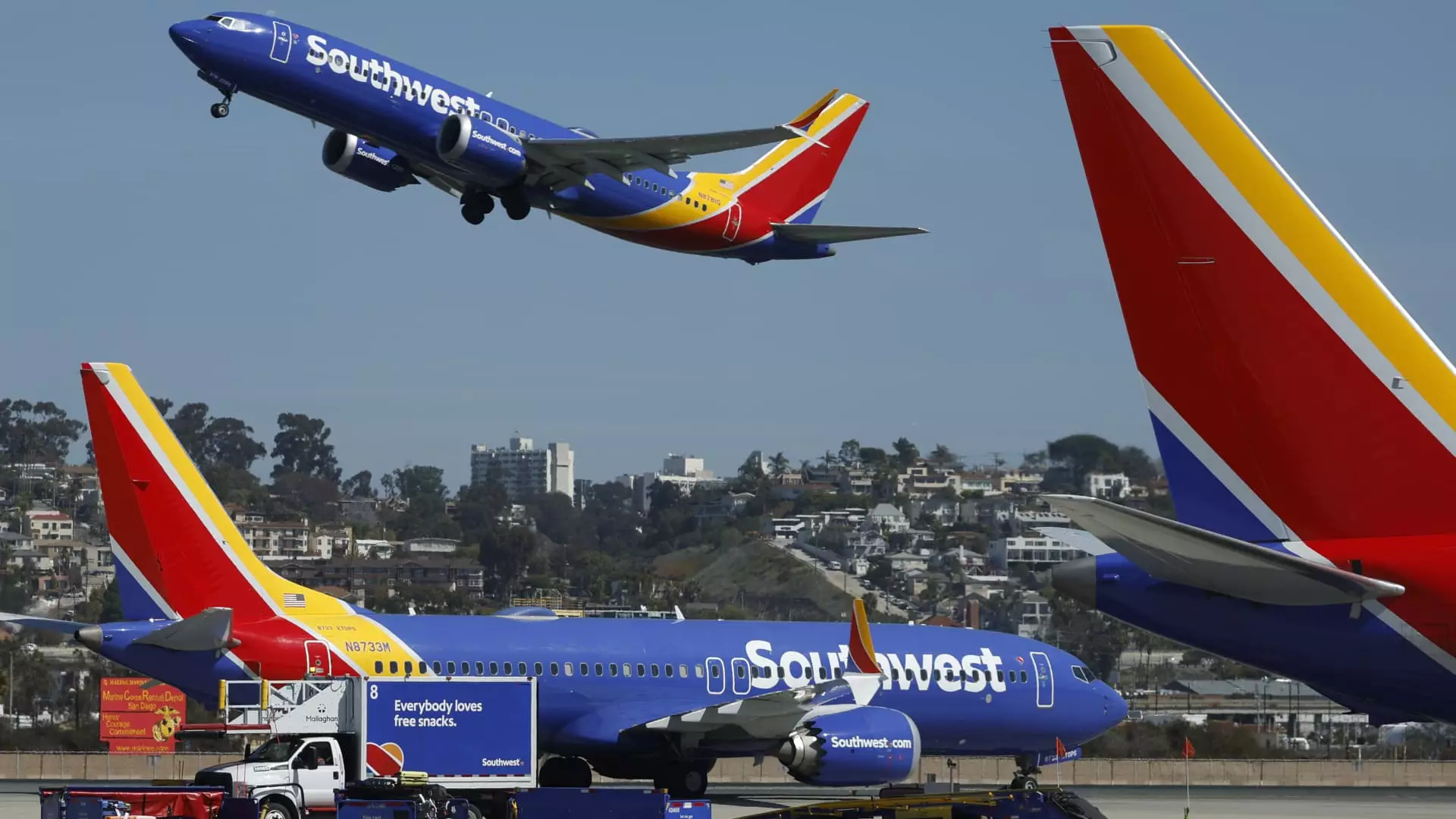In an ever-evolving aviation landscape, Southwest Airlines, a historically low-cost carrier, finds itself teetering on the edge of a once unthinkable transformation. The landscape of commercial air travel isn’t just changing; it’s actively leaving airlines like Southwest behind unless they adapt urgently. In a recent interview, CEO Bob Jordan hinted at a substantial shift in their operational strategy, targeting affluent travelers with amenities like airport lounges and premium seating. The focus is to draw these lucrative customers, previously sent to competitors. With a competitive pressure that seems more formidable than ever, one must ask: is Southwest truly prepared for the long-haul changes necessary, or is corporate indecision their Achilles’ heel?
Defying Tradition: Southwest’s Identity Crisis
For nearly 54 years, Southwest Airlines has cultivated a distinctive brand identity characterized mainly by its open seating policy and free check-in luggage. However, hearing talk of lounges and premium services feels like a departure from that core ethos. The question arises: Can this shift reconcile the traditional values of Southwest with the stark realities of a challenging market? As competitors like Delta and American Airlines amplify their investments in luxurious travel experiences, it appears that Southwest faces a dilemma. Should it hold onto its distinctive brand identity or allow itself to be molded into something that aligns more with the preferences of today’s airline consumers?
Despite their history of offering low costs, the airline is currently contemplating a future that might erode this distinguishing identity. Many loyal customers now find the prospect of premium services compelling. Still, the inherent inconsistency between frugality and luxury presents a discord that only time will clarify. If executed poorly, this strategy could alienate long-time customers who have championed the airline’s affordability. Conversely, if it meets customer demand effectively, it could rejuvenate its standing in a competitive market marred by rising airfare.
Dilemmas of Modernization: Frugality vs. Luxury
When examining Southwest’s intentions to implement premium offerings, one must recognize the broader market dynamics at play. Airfare has seen a drop, igniting fierce competition that thrusts even the most established carriers into tumultuous waters. Southwest’s recent shift towards introducing economy fare structures reflects a growing recognition of this evolving landscape. However, the looming threat of customer defection to other airlines highlights a critical dilemma: will low-cost flyer loyalties hold firm in the face of more luxurious alternatives?
Jordan’s assertion that Southwest will remain steadfast to its core aligns with old school sentiments, but the realities of consumer behavior illustrate that many are drawn to the siren call of luxurious amenities. Should Southwest decide to chase high-spending customers, it may inadvertently risk losing its long-time supporters of budget travel. Given this precarious balance, it’s essential for the airline to discern which strategy truly resonates with its intended audience.
International Ambitions: A Leap Into the Unknown
Jordan has not shied away from discussing international prospects, signaling a potential shift toward long-haul operations that could redefine Southwest Airlines’ trajectory. A commitment to serving destinations in Europe and beyond remains a tantalizing yet unpredictable frontier for a carrier that has relied on the same Boeing 737 fleet for over half a century. Will changing its operational model yield the expected dividends, or will it expose the airline to tighter regulations and uncertainties associated with international flying?
Making ambitious strides into international markets requires more than just new aircraft; it demands a robust strategy that prioritizes customer satisfaction and operational efficiency. As competitor airlines expand their international reach, Southwest must consider the inherent challenges posed by international travel. Competing effectively on this level necessitates a firm commitment to quality service that exceeds what’s offered within the confines of domestic travel.
The Future and the Stakes are High
The stakes are high, and time is certainly of the essence for Southwest Airlines as it contemplates a shift towards a more diverse operational model. The challenges are numerous, but so are the opportunities for a brand eager to align itself with evolving consumer expectations. The internal discourse within the airline reveals an underlying tension between honoring its historical ethos and accepting harsh market realities that demand modernization.
Already, customers are being attracted by the luxuries offered by competing airlines, and waiting too long to react could result in disastrous long-term repercussions for Southwest. As Southwest Airlines boldly steps into this uncertain future, the imperative must be to chart a course that marries its storied past with its visions for a prosperous tomorrow.

